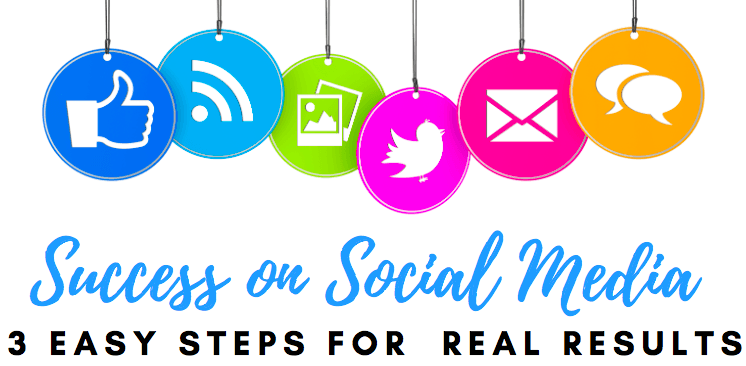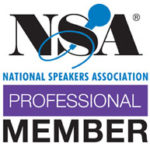Are you putting your best self forward virtually? Without face-to-face personal connection, are you concerned that your leadership presence isn’t coming through?
Although leadership and executive presence is a big topic, optimizing how you come across virtually is easy! Here’s a checklist-style discussion of tips you can implement right away, so grab a pen and paper – because this episode is for you.
In this episode of The Career Rx we’ll discuss:
- How to dial up your leadership presence in virtual settings
- Verbal and nonverbal ways to maximize effectiveness of your messaging
- Simple tweaks that have a major impact on how others see (and hear) you virtually
Today we’re going to be talking about putting your best self forward virtually. Inspired by a note that I received from one of my students who is currently taking my course, The Speaking Rx. They asked, “I’m just so much better in person, it’s hard to connect and make a good impression virtually. How do I do that in an all-Zoom environment? Do you have any tips?”
This episode highlights my pro-tips for how you can actually gain ground and continue to grow and develop your executive presence, your executive reputation, and your leader reputation virtually. I give a variety of actions and resources to further your understanding of communicating in a more digital world. By the end of this episode, you will have a checklist of things to do immediately that will improve your online authority.
“Take care of all of these details so there’s really nothing standing between you, the other folks on your call, and the great ideas that you bring to bear.” – Marjorie Stiegler
In this Episode:
[1:08] Don’t lose ground or put your professional advancement on hold
[3:08] How speaking, as an asset, results in professional growth for you
[4:50] Does your avatar and screen name tell the story you want to tell?
[6:30] Body language and eye contact – new rules for a digital world
[7:00] Lights, cameras, and on-screen actions (also locate that mute button)
[9:10] Check out my tech recommendations list
[13:50] Ensure strong messaging presence
[15:35] Habits that diminish your credibility – and an easy fix
[16:30] When (and why) you should have a meeting before the meeting
Links and Resources:
The Branding Rx 18 hours of CME, mastering digital strategies for advancing your career, building your business, and growing your professional brand
Episode 21: Eight Pro Tips for Virtual Meetings
Episode 40: Stop Auditioning, Start Leading
Episode 37: Beyond Mentors and Sponsors: 7 Allies You Need in Your Network
Laptop stand (consider whether you’d like it to be adjustable or fixed height)
Microphone (I use a Yeti Snowball for my podcast and zoom)
Speaker or headset (I have a Jabra and a Bose wearable)
Lighting (I have a set of light rings from 10 inches to 18 inches)
My tech recommendations and reviews
I earn commission for some purchases through the Amazon program if you purchase via my links. It’s a great way to support this show and content at no cost to you!
LISTEN TO THIS EPISODE:
SUBSCRIBE TO THE CAREER RX PODCAST:
Get every episode on your preferred player…
Apple Podcast | Google Podcast | Spotify | TuneIn + Alexa | iHeart Radio
More for you:
Book:
Courses:
The Branding Rx 18 hours of CME, mastering digital strategies for advancing your career, building your business, and growing your professional brand
The Speaking Rx learn the business of professional public speaking to establish yourself as a thought leader you are, and get paid for your speaking expertise
Industry Insider – what to know about landing a nonclinical career without a new degree, a foot in the door, prior experience, or a pay cut
Launch an Online Course on Any Budget – know your course will sell before you spend any time or money to create it; plus, the exact logistical blueprint to get paying customers and a way to deliver your course without spending a dime (ready to scale up when you are!)
Let’s connect!
Twitter | Instagram | Facebook | LinkedIn
Thanks for joining me on this episode of The Career Rx!
Please be sure to leave me a review on Apple and don’t forget to send me your questions so I can answer them and give you a shout out on a future episode.
TRANSCRIPT: Episode 44 – Top Tips for Executive Presence in a Digital World
Hey there, welcome to the Career Prescription. I’m your host, Marjorie Stiegler. This podcast is all about the important stuff. They don’t teach you in medical school, about how to treat your career, like the business it really is, and how to be strategic about your success. I’ll show you how to use modern strategies to get ahead, create your own path, and do more of what you love. Every episode is inspired by questions from listeners just like you. So be sure to subscribe and of course, send me those questions, so I can use them on a future episode. So you don’t miss anything, be sure to always check the show notes on my website. Are you ready? Let’s get into it.
Hey there, welcome back. Thanks for joining me again on The Career Rx. Today, we are going to be getting to how you can have really powerful executive presence when we’re not in person in this digital world that we’re in. I don’t think this will last forever but, it certainly is something where you can put your professional life on hold. And you are going to continue to have people form impressions of you throughout all of the Zoom calls, and for however much longer that persists into the future. And however it continues to show up in the future as it undoubtedly will. Even when we are able to get back to more in person activities, this is going to be important. So rather than have your life on pause, or have you kind of losing ground, I’m going to give you some tips for how you can actually gain ground and continue to grow and develop your executive presence and your executive reputation, your leader reputation, while we’re all interfacing in Zoom, which for many people is not our best.
And that is reflected in the little note that I got from one of my students who is currently taking my course The Speaking Rx. So as a quick aside, when I first developed this course, it was all about learning the business of public speaking and how to actually get paid to deliver presentations and speeches, which an academic medicine is not very common. But for those of you who are familiar with that part of my blog, or if you’ve taken that course, you’ve thought about that course, you know that a lot of people, even non experts get paid $15,000 – $20,000 for a single one hour talk. And it’s totally not out of reach for you. But anyway, as I have been developing the course and especially as I continue to work with the Association of Women Surgeons and other major organizations, who have been interested in The Speaking Prescription, I’ve started to make sure that I include speaking as a way to get paid in the more traditional sense meaning is the way to get promoted, to become recognized as a thought leader, the way to get additional professional opportunities essentially, to get head become recognized, and really become established as that thought leader.
That’s how you get ahead in a traditional career. And that, of course, is getting paid, right? So it’s not about getting paid dollars for your speaking time necessarily, but how to make showing up as a speaker, a professional asset that results in professional growth for you.
So anyway, my student writes to me, and that’s that’s the students purpose in taking that course, is to grow professionally in a traditional academic setting. And the question that he writes is, well, it’s a long question. So I’m going to take the excerpt from the middle that basically says, “I’m just so much better in person, it’s hard to connect and make a good impression virtually. How do I do that in an all-Zoom environment? Do you have any tips?”
So the answer to that is, yes, indeed, I do have some tips. I will start by saying, if you haven’t already, please be sure to go listen to Episode 21, which is entitled Eight Pro Tips for Virtual Meetings. So this is not necessarily about giving a presentation, but it is about how to show up in the virtual world and to be able to make a good impression. There’s a little bit of overlap between the content I’m going to cover here today and that one, but it’s a good one. And it has some things that I’m not going to be able to squeeze in today.
I am going to give this episode a sort of rapid fire list, you could almost bullet out everything I’m going to say and they’re all just little action items. So if you are able to right now, get out a pen and paper or something and make yourself a little checklist because these are things you’re going to want to go do. You’re going to want to go do them. Some of them are one time actions, and you’re going to want to go take care of them at the end of this podcast episode. And other ones, you’ll want to just remind yourself every time you’re about to go on camera, so that you can be on the lookout and get these things right.
Okay, number one, the first thing you have got to do, no matter which platform and maybe you have many platforms. I’m going to call it Zoom for simplicity, but I know there’s a lot of other ones out there. Please, please, please update your name and your photo. Put a professional headshot in your photo so that it’s not blank or some avatar or your initials, put a headshot of you the way that you like to be viewed as a professional, in the avatar space, and make sure that your name is correct.
And by that, I mean, you know, if you go by your middle name, or a nickname that wouldn’t be obvious from your first name, or you like to be called something other than what your first name is, please be sure that your name on the platform reflects what you want to be called and how other people commonly refer to you. So, you know, part of executive presence is you need people to know you, you need people to know who you are, and every now and then you’re going to be on meetings, perhaps fairly commonly, we’re not everybody knows each other. And sometimes where there are other leaders or people from other parts of the organization, and you want for them to be able to put a name and a face, quickly and correctly. So the way that you would introduce yourself, if you were there shaking hands with somebody, that’s what your name ought to say.
Okay, number two, be on camera whenever possible, be on camera. So I know I just said, you know, buff up your name and your and your photo for avatar. But whenever possible, please be on camera so that people can see you face to face. You want to really, really show up, be there on time, start on time, be prepared.
And by the way, when you are speaking or when you’re really trying to make a point when you are trying to really connect, look at the camera, not at the screen. This is a challenge for a lot of people because we like to look at other people’s eyes in order to make eye contact, but nobody else’s eyes are up at the camera, their eyes are all over the place on the screen. And that gives the impression then when they’re looking at you that you are looking down or to the side, you aren’t looking at them unless you’re looking in the camera.
Okay, number three, have a strong visual presence. And I’m going to give you a couple sort of sub bullets. Now, what does it mean to have a strong visual presence? Well, again, we’re talking about showing up like an executive showing up like a leader. So a couple of things:
Background: If you’re going to be using one of those virtual backgrounds, that’s great, but please do be sure that it’s not distracting, and that it is appropriate for the sort of tone that you intend for the meeting. If you’re going to be using your own background, that’s super as well, just make sure it’s at least somewhat tidy. And that there’s nothing you know, that could be offensive or distracting, the same kind of thing you wouldn’t put on your desk at work.
Apparel: If your background is very bold, then you, of course, try to have more muted apparel on, right? You don’t want to be a big big clash festival. But it’s you look best in bold colors, you will look best in a bold color. And you will also look best not in a pattern, because patterns don’t tend to come across very well on the screen in the way in which they look great in real life. So solid colors, bold colors on, on yourself and avoid distracting accessories like hats, jewelry, and makeup can also sometimes look much better in real life than on camera.
It might be helpful to take a selfie and even to ask some friends what they think. Because you, of course, are very familiar with what your home environment looks like. And what doesn’t seem like a cluttered or distracting background to you, might seem like it to others. So perhaps take a selfie of yourself and frame and ask some trusted friends. So that you can be sure that you’re projecting yourself in the way you intend.
Okay, more on your strong visual presence is lighting. Really important to have some good natural light
coming in or to have a light ring. I know that you can find resources on how to get, you know, well lit, but generally speaking, being backlit, meaning that the light is coming from behind you or that harsh ceiling light, it’s usually not very flattering, it just doesn’t let you show up looking your best and since there’s very little presence other than what you sound like and what you look like, it is important to get lighting right. I do have some recommendations, I have a link in the show notes to my wreck sheet and you guys can go check that out. If you need some help shopping for that kind of thing. You don’t know what it is.
And as far as how you show up in frame, please be sure that you are in the middle of the frame and that you are looking straight ahead. Now this might sound really, really obvious but a lot of people have, you know, a corner desk or an extended screen. And so for that reason, their camera is looking at their profile and they are looking you know their larger screen that’s on the other side, that’s where they see things. If you’re giving a presentation or you’re going to be participating in a conversation, you really ought to change that configuration, make sure you’re looking straight ahead.
Also, if lots of people have laptops these days and your laptop and your desk height is very unlikely to line up to be straight ahead, the camera is going to be giving an angle where either part of your body is cut off, like your head is cut off, or that you’re looking down at the camera on the camera sort of looking up your nose. If you don’t want that, you can remedy this quickly and easily by placing your laptop on a stack of books, or if you want to be just slightly more professional, and nobody will see this so it’s entirely up to you, you can get an elevator stand to lift your laptop. Again, I’ll put a link in my recs.
This is very easy, very inexpensive, but it’s a tweak so that you look good in the frame. You do want to be sure that you’re in the middle and that you’re close enough, but not too close. Well, what does this mean? If you can put an apple or your fist on the top of your head and have it just reach the top of the screenshot, so not cut off, but also not a lot of extra space there, that’s usually pretty good. You can be well assured that you’re close enough to the camera, that you’re not going to be cut off in your frame, and that you’re not too close, you also want to be roughly within an arm’s length. So you do want to be able to touch the controls on your computer, within an arm’s length without having to reach and stretch because that’s very distracting if you need to get closer and then come back away from the camera. So you want to be set up so you don’t have to move a lot. Now in order to do things like say, come on and off of mute. Okay, so that’s a strong visual presence.
Now let’s talk about having a strong audio presence really, really important. It’s been said that people can tolerate poor video quality, but poor audio quality is just a deal breaker. And I’m sure you can relate. Because you’ve been on many calls where you’ve thought, gosh, you know, that person has their static or I can’t quite hear them, they’re trailing off, people really have very low patience, very low tolerance, for listening to things that don’t meet a certain threshold of audio quality. So it’s really important to get it right.
One thing is, the high quality sound is usually not going to be coming from your speaker, or the microphone of your computer, you’re going to need an external device, it doesn’t need to be an expensive device. I have some recommendations, as I mentioned on my website, but get a speaker and a microphone that are external that are high quality and that are going to be minimizing background noise and making your voice, your audio nice and clear.
Be sure you do know how to use that mute button and that you use it when you’re not speaking and you don’t have any expectation of being imminently about to speak, you really ought to be on mute. Because every little shift and shuffle certainly adds up in the total experience of people being on Zoom together. And you know, it gives it away when you’re a little your little icon lights up, somebody knows that you are the source of that background noise. So don’t be that person, use your mute button.
Finally, on that note, get the volume right. I’ve been hearing a lot of interesting science about how more and more people are having vocal cords strain, because they’re now speaking so much all day long into these Zoom calls. And there’s a tendency to sort of yell into the computer for some reason, right? We feel like people can’t hear as they feel far away. We feel like we want to yell and so we raise our voices, and speak much more loudly than we would if we were sitting in a conference room. So be sure that you are mindful of how, how loud you are. It’s always, I think, okay to ask people if they can hear you well, or to do some kind of soundcheck in advance and consider calibrating yourself if you’ve got a good speaker so you, you have the tech problem solved.
If you imagine that you have a friend or colleague sitting in your home office with you in a chair, or in a couch, right? That’s just within that room just that far away. What voice would you need to have a conversation with them and then try to replicate that as you’re communicating on your Zoom call.
Okay, now let’s talk about strong messaging presence. So there’s a few things you want to avoid and a few things that you want to do. You should avoid the hedging language that so many of us do, where you’re sort of giving qualifiers to your ideas. “I’m not sure if you’ll understand.” “I don’t know if you’ll like…” “I might be too new.”, that kind of thing. Avoid that hedging language, avoid self critique, right, anything that talks about your newness, your lack of familiarity, you not being sure how things work around there, there’s no need to say any of those things. There’s no need to sort of prelude your ideas with a you know, a painting the picture already, that somehow they aren’t worthy to be there.
For more on this, I recommend listening to my episode number called Stop Auditioning and Start Leading. It’s at marjoriestieglermd.com/episode40, check that one out. I have much more detail in there about how your language comes across and how it basically tells people that you’re not leading or tells people that you are.
A few other things about messaging is to avoid excessive use of tag questions. Tag questions are when you say out of habit and repeatedly, things like, you know, does that make sense? Right? Questions like that that are rhetorical, really. But they do start to become not only annoying to the listener, but they do also start to sow a little bit of doubt about your credibility, because it begins to sound to the listener as if you are repeatedly asking for affirmation. They’re not necessarily intending to solicit affirmation, but it becomes, it begins to sound that way. So be mindful if you do that, and try to minimize your use of tag questions.
Another final note on strong messaging is be careful if you’re one of those folks who are prone to that upward inflection at the end of a sentence that makes it sound like a question when you mean it as a statement. So I think you know what I mean, there when you are speaking and you make it sound like a question, you make it sound like a question. And that is not powerful executive presence when you are conveying a recommendation or an idea. If you have a question. It’s great, make it sound like a question. But if you have a statement, if you have a suggestion, if you have a recommendation, if you have an idea, you’re putting forth a proposal, don’t let it sound like a question.
Okay, finally, on my list of showing up for that strong executive presence in a virtual world, show up with your allies already on your side. By this I mean, have a meeting before the meeting, think about who the important players are, who might have a different view, who might be a critique. And importantly, if they agreed with you, who might be really important in getting your idea to the finish line. Have a meeting with them in advance and know what they’re going to say, ideally, know that you have their support. But if you don’t, at least already have a good understanding of what their objections are, and how they are going to show up so that you aren’t floating an idea or proposal or recommendation, as a leader, to a group of people without also knowing how other key players are going to show up.
And you may not be able to do this with everybody. And of course, if part of the purpose of your meeting is to persuade your boss you know, you won’t be able to do it with your boss in advance of the meeting. But you may be able to do it with other people who can be strong allies. I’m going to recommend to you now also that you go check out Episode 37, which is again, marjoriestieglermd.com/episode37. This is on the seven types of allies, beyond mentors and sponsors that you should have in your network. And within that group, I’m thinking of the people that you would have a meeting with before the meeting. So you show up with allies in tow, and give you a much more powerful executive presence in the digital world.
Okay, so if you did what I said at the beginning of this episode, and you’ve been taking notes, now you have a little checklist of things to go do, you can go back and you can fix your name and your photo, your avatar, your framing your background, everything that that you’re going to need to have set up that then could stay that way. And ideally, you have a little checklist that can stick by your computer, so that you can remind yourself to avoid self critical language hedging critiquing, tag questions, upward inflection, and make sure that you have checked on your volume, your mute button, all of the other things that will put you nicely in frame. As my student mentioned in his note, it can be hard to show up at our very, very best in a virtual environment.
And so if you take care of all of these details, then you’ve set yourself up so there’s really nothing standing between you, the other folks on your call, and the great ideas that you bring to bear. So tackle all of these items and be ready to start showing up with a powerful executive presence COVID or no COVID digital world or not.
That’s it for today. Bye for now.
And thanks for joining me on this episode of The Career Rx. Be sure to leave me a review on Apple Podcasts or whatever podcast player you’re using to listen today. And definitely send me those questions so I can answer them and give you a shout out on a future episode. Bye for now.








